Explore the world of trees that start with Z, from the majestic Zelkova to the unique Zacatecas Yucca. Discover 10 fascinating tree species and their importance in this easy-to-understand guide for nature lovers and tree enthusiasts.
Trees are amazing parts of nature. They give us clean air, shade and make our world more beautiful. Today, we’re going to learn about some special trees whose names start with the letter Z. These trees might not be as well-known as oaks or maples, but they’re just as interesting!
1. Zelkova
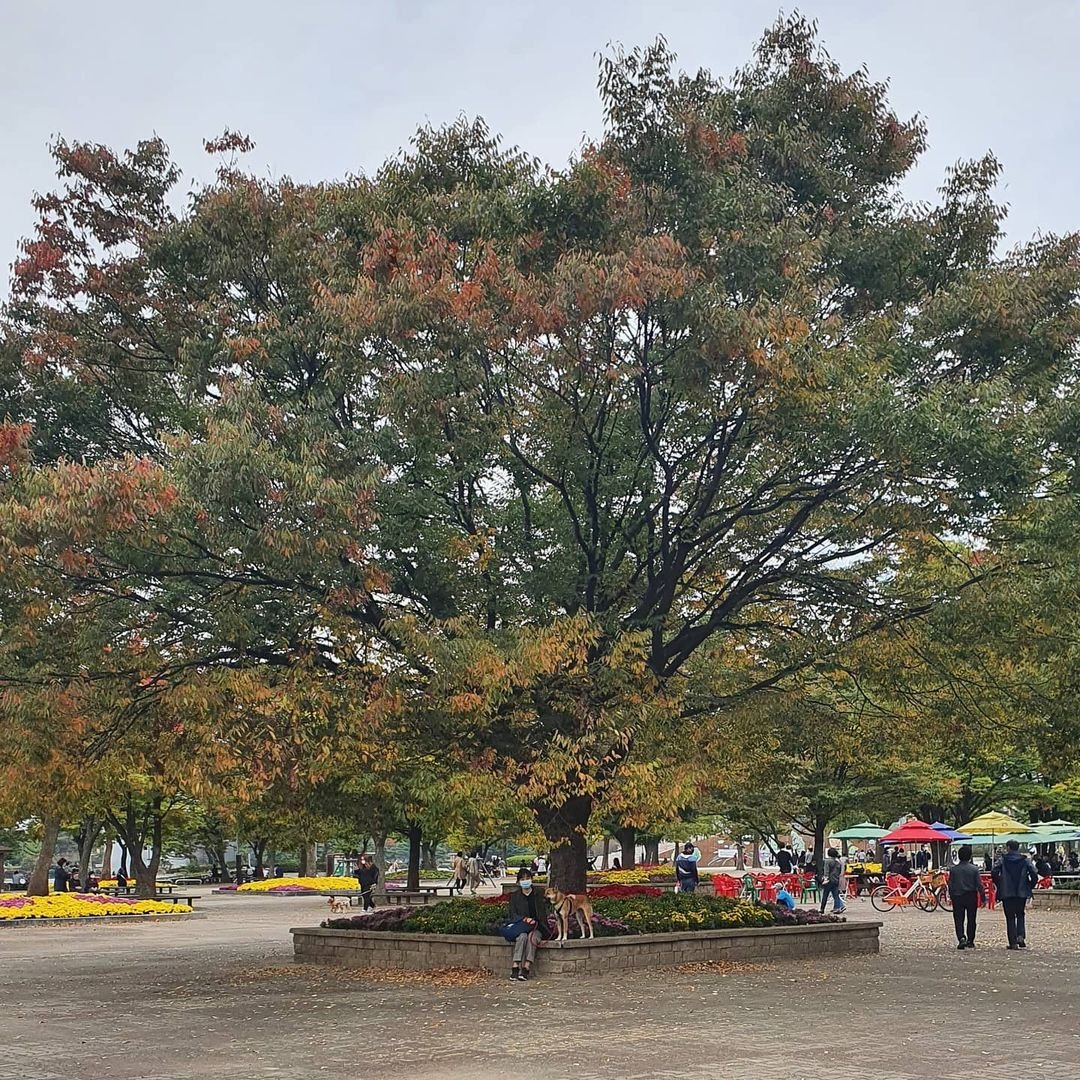
Certainly! Here’s a chart with information about the Zelkova tree:
| Aspect | Details |
|---|---|
| Botanical Name | Zelkova serrata |
| Common Name | Zelkova, Japanese Zelkova |
| Plant Type | Deciduous tree |
| Hardiness Zone | Zones 5-8 |
| Sun Exposure | Full sun |
| Soil Type | Well-drained, fertile soil |
| Watering Needs | Moderate; drought-tolerant once established |
| Growth Habit | Upright, vase-shaped |
| Height/Spread | 50-80 feet tall / 50-75 feet spread |
| Special Features | Attractive bark, good fall color, disease resistant, tolerant of urban conditions |
The Zelkova tree is originally from East Asia, but it’s now grown in many parts of the United States. The most common type in the USA is the Japanese Zelkova (Zelkova serrata).
Zelkova trees can grow quite tall, often reaching 50 to 80 feet high. They have a vase-like shape, with branches that spread out wide at the top. The leaves are oval-shaped with jagged edges and they turn beautiful shades of yellow, orange and red in the fall.
People often plant Zelkova trees in cities because they can handle pollution and different types of soil. They also provide nice shade and don’t have invasive roots that might damage sidewalks.
2. Ziziphus
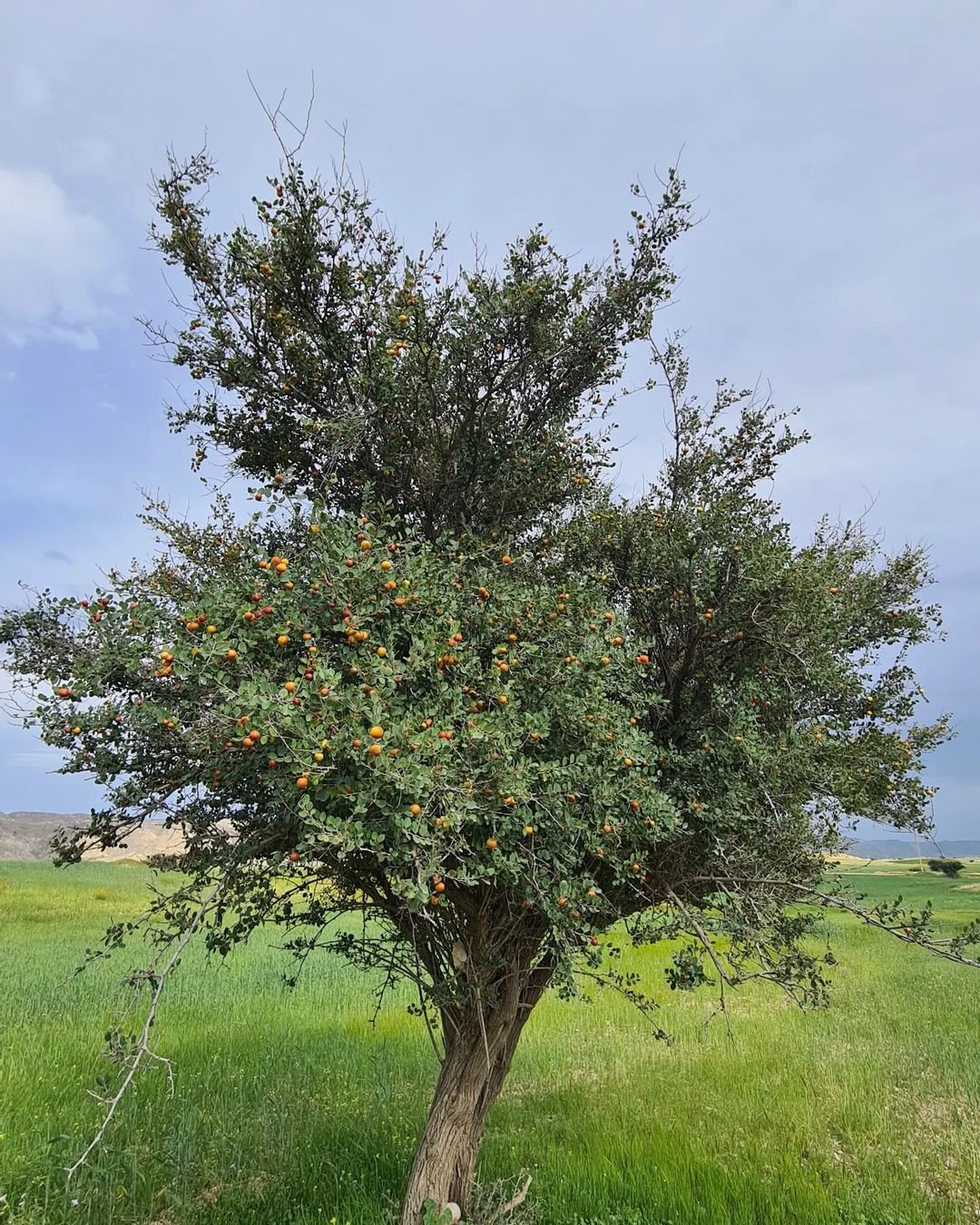
Certainly! Here’s a chart with information about the Ziziphus (Jujube) tree:
| Aspect | Details |
|---|---|
| Botanical Name | Ziziphus jujuba |
| Common Name | Jujube, Chinese Date |
| Plant Type | Deciduous tree |
| Hardiness Zone | Zones 6-9 |
| Sun Exposure | Full sun |
| Soil Type | Well-drained, adaptable to various soil types |
| Watering Needs | Low to moderate; drought-tolerant once established |
| Growth Habit | Upright, spreading |
| Height/Spread | 15-30 feet tall / 10-15 feet spread |
| Special Features | Edible fruit, drought-tolerant, attractive bark, thorny branches, can be used as a hedge or specimen tree |
Ziziphus, also known as the Jujube tree, is a small tree that originally comes from China but now grows in many warm parts of the world, including some areas of the United States.
Jujube trees usually grow to be about 15 to 30 feet tall. They have shiny green leaves and small, fragrant flowers. But what makes these trees really special is their fruit, also called jujubes or Chinese dates.
Jujube fruits start out green and then turn dark red or purple when they’re ripe. They’re sweet and can be eaten fresh, dried or used in cooking. Some people say they taste a bit like apples.
3. Zebra Wood
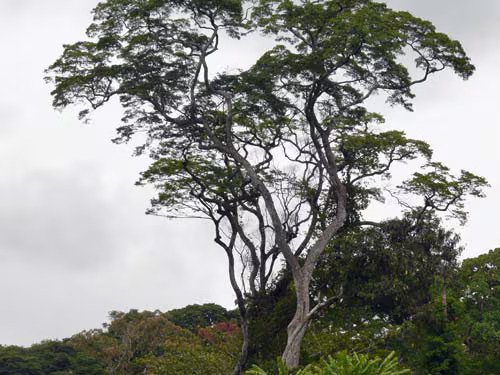
Certainly! Here’s a chart with information about the Zebra Wood tree:
| Aspect | Details |
|---|---|
| Botanical Name | Microberlinia brazzavillensis |
| Common Name | Zebrawood |
| Plant Type | Deciduous tree |
| Hardiness Zone | Tropical zones (USDA Zones 10-11) |
| Sun Exposure | Full sun to part shade |
| Soil Type | Well-drained, fertile soil |
| Watering Needs | Moderate; consistent moisture |
| Growth Habit | Tall, straight trunk |
| Height/Spread | 100-130 feet tall / 30-50 feet spread |
| Special Features | Highly valued for its decorative and durable wood, used in fine woodworking and furniture making |
Zebra Wood trees don’t actually have stripes like a zebra. They get their name from the unique pattern of their wood, which has dark and light stripes when it’s cut.
Zebra Wood trees are native to central Africa and don’t grow naturally in the United States. However, the wood from these trees is popular for making furniture, musical instruments and decorative items.
These trees can grow very tall in their native habitat, sometimes reaching heights of 150 feet or more! They have large leaves and produce flowers that grow in clusters.
4. Zanthoxylum
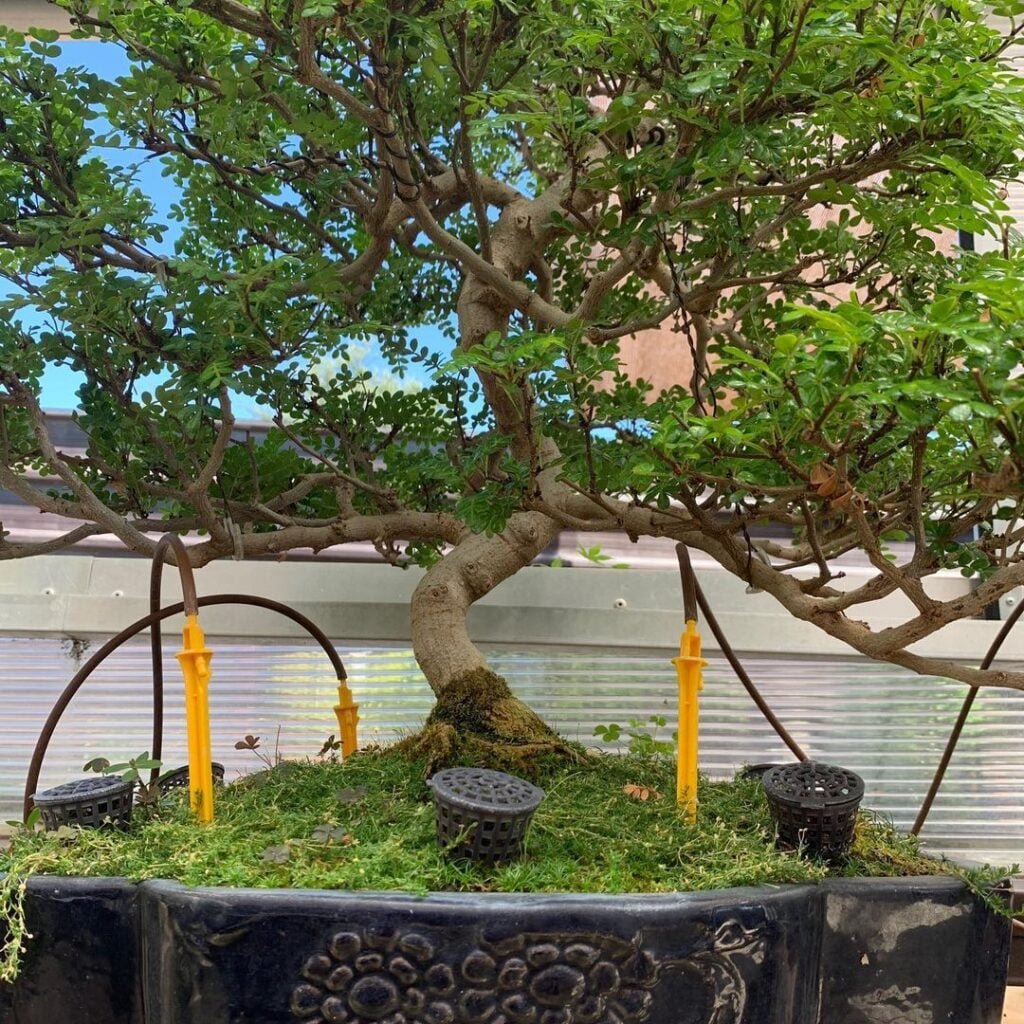
Certainly! Here’s a chart with information about the Zanthoxylum (Prickly Ash) tree:
| Aspect | Details |
|---|---|
| Botanical Name | Zanthoxylum spp. |
| Common Name | Prickly Ash, Toothache Tree, Szechuan Pepper |
| Plant Type | Deciduous tree or shrub |
| Hardiness Zone | Zones 4-9 (depending on species) |
| Sun Exposure | Full sun to part shade |
| Soil Type | Well-drained, adaptable to various soil types |
| Watering Needs | Moderate; drought-tolerant once established |
| Growth Habit | Upright, spreading |
| Height/Spread | 15-25 feet tall / 15-25 feet spread |
| Special Features | Aromatic leaves and bark, thorny branches, medicinal uses, edible berries (used as Szechuan pepper), attracts pollinators |
Zanthoxylum, also known as Prickly Ash, is a group of trees and shrubs that includes several species native to North America. One common type in the USA is the Northern Prickly Ash (Zanthoxylum americanum).
Prickly Ash trees are usually small, growing to about 10 to 25 feet tall. As their name suggests, they have prickles or thorns on their branches and trunks. The leaves are compound, meaning each leaf is made up of several smaller leaflets.
These trees have an interesting feature: when you crush their leaves or berries, they smell a bit like lemon or lime. In fact, Prickly Ash is sometimes called “toothache tree” because chewing on the bark or berries can cause a numbing sensation in the mouth.
5. Zunila

Certainly! Here’s a chart with information about the Zunila (Ziziphus parryi) tree:
| Aspect | Details |
|---|---|
| Botanical Name | Ziziphus parryi |
| Common Name | Parry’s Jujube, Lotebush |
| Plant Type | Deciduous shrub or small tree |
| Hardiness Zone | Zones 8-10 |
| Sun Exposure | Full sun |
| Soil Type | Well-drained, sandy or rocky soil |
| Watering Needs | Low; very drought-tolerant |
| Growth Habit | Upright, spreading |
| Height/Spread | 6-10 feet tall / 6-10 feet spread |
| Special Features | Thorns, edible fruit, attracts wildlife, very drought-tolerant, suitable for xeriscaping |
Zunila, also known as Parry’s Jujube, is a small tree or large shrub native to parts of the southwestern United States and northern Mexico.
Zunila trees usually grow to be about 10 to 20 feet tall. They have small, oval-shaped leaves and thorny branches. In the spring, they produce small yellow flowers, which later turn into small, edible fruits.
These trees are well-adapted to dry environments. They have deep roots that help them find water and their small leaves help reduce water loss. Native Americans have traditionally used various parts of the Zunila tree for food and medicine.
6. Zenia
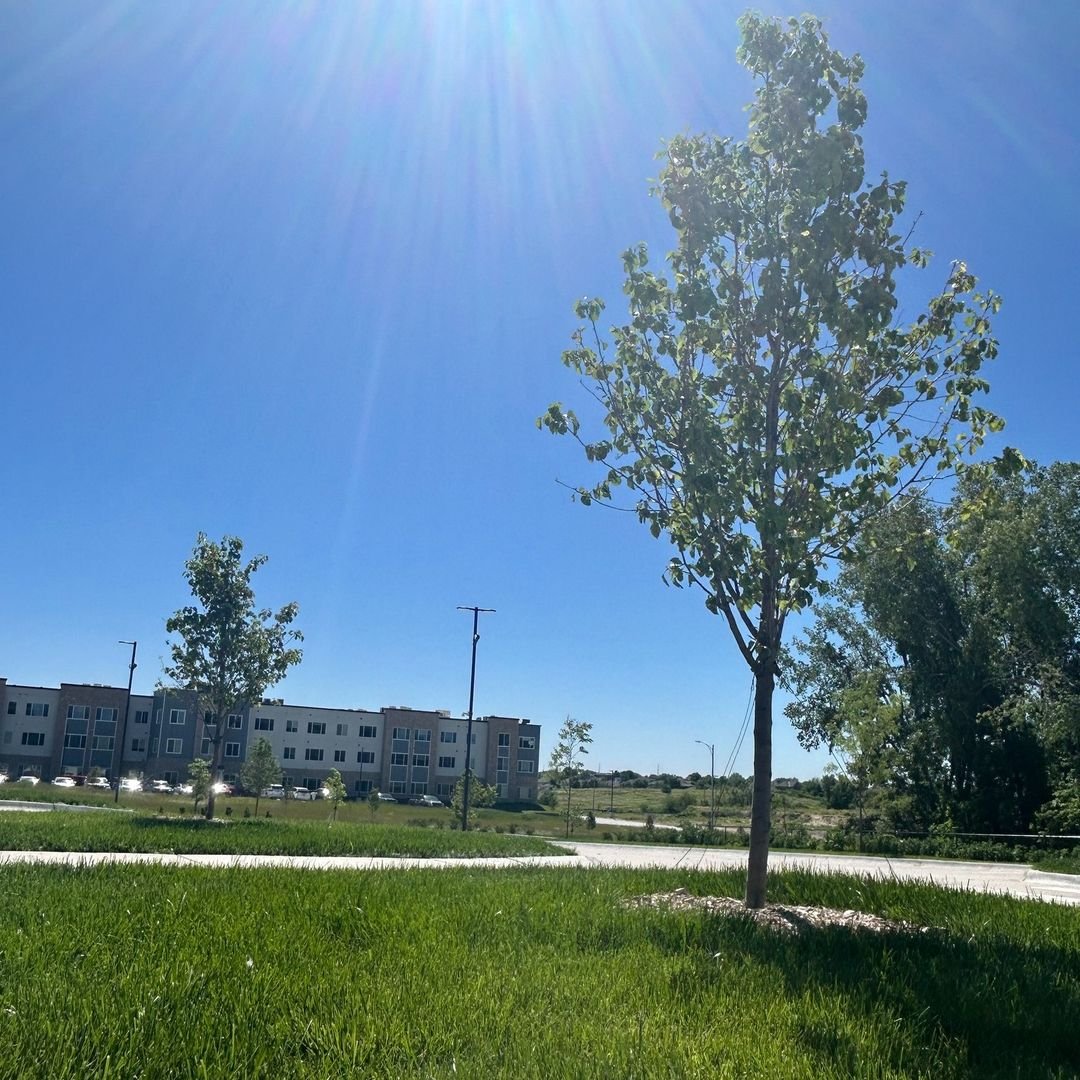
Certainly! Here’s a chart with information about the Zenia (Zenia insignis) tree:
| Aspect | Details |
|---|---|
| Botanical Name | Zenia insignis |
| Common Name | Zenia, Drunken Tree |
| Plant Type | Deciduous tree |
| Hardiness Zone | Zones 9-11 |
| Sun Exposure | Full sun to part shade |
| Soil Type | Well-drained, fertile soil |
| Watering Needs | Moderate; drought-tolerant once established |
| Growth Habit | Upright, spreading |
| Height/Spread | 20-30 feet tall / 20-30 feet spread |
| Special Features | Showy flowers, attractive foliage, drought-tolerant, used as an ornamental tree in tropical and subtropical regions |
Zenia is a tree that’s native to parts of Southeast Asia. While it doesn’t grow naturally in the United States, it’s an interesting tree to learn about.
Zenia trees can grow quite tall, reaching heights of up to 100 feet in their native habitats. They have large, heart-shaped leaves and produce beautiful purple flowers.
One interesting fact about Zenia trees is that their seeds have wings, which help them to be carried by the wind when they fall from the tree. This allows the tree to spread its seeds over a wider area.
7. Zelkova

Here, I’ll provide information specifically about the Chinese Elm (Ulmus parvifolia):
| Aspect | Details |
|---|---|
| Botanical Name | Ulmus parvifolia |
| Common Name | Chinese Elm |
| Plant Type | Deciduous tree |
| Hardiness Zone | Zones 4-9 |
| Sun Exposure | Full sun to part shade |
| Soil Type | Well-drained, adaptable to various soil types |
| Watering Needs | Moderate; drought-tolerant once established |
| Growth Habit | Upright, spreading |
| Height/Spread | 40-50 feet tall / 30-40 feet spread |
| Special Features | Attractive, exfoliating bark, small glossy leaves, resistant to Dutch elm disease, can be used as a shade tree or for urban landscapes |
The Chinese Elm (Zelkova sinica) is another species in the Zelkova family. It’s native to China but is sometimes planted in the United States as an ornamental tree.
Chinese Elms can grow to be about 50 to 80 feet tall. They have a rounded crown and bark that peels off in patches, creating an interesting mottled pattern. The leaves are small and oval-shaped and they turn yellow in the fall.
These trees are known for being tough and able to grow in many different conditions. They’re often used in bonsai, the Japanese art of growing miniature trees in containers.
8. Zealand Pine

Certainly! Here’s a chart with information about the Dacrydium cupressinum tree:
| Aspect | Details |
|---|---|
| Botanical Name | Dacrydium cupressinum |
| Common Name | Rimu, Red Pine |
| Plant Type | Evergreen conifer |
| Hardiness Zone | Zones 8-11 |
| Sun Exposure | Full sun to part shade |
| Soil Type | Well-drained, acidic soil |
| Watering Needs | Moderate; prefers moist conditions |
| Growth Habit | Upright, pyramidal |
| Height/Spread | 65-100+ feet tall / 20-40 feet spread |
| Special Features | Attractive, drooping foliage, reddish-brown bark, valuable timber, slow-growing, native to New Zealand |
The Zealand Pine, also known as Rimu, is a tree native to New Zealand. While it doesn’t grow naturally in the USA, it’s an interesting tree to learn about.
Despite its common name, the Zealand Pine isn’t actually a pine tree. It’s a type of conifer that can grow very tall, sometimes reaching heights of over 160 feet. The tree has drooping branches with scale-like leaves, giving it a distinctive appearance.
Zealand Pines are important in New Zealand’s ecosystem and culture. The wood is valued for furniture making and the trees provide food for many native birds.
9. Zahidi Date Palm

Certainly! Here’s a chart with information about the Zahidi Date Palm tree:
| Aspect | Details |
|---|---|
| Botanical Name | Phoenix dactylifera ‘Zahidi’ |
| Common Name | Zahidi Date Palm |
| Plant Type | Evergreen palm tree |
| Hardiness Zone | Zones 9-11 |
| Sun Exposure | Full sun |
| Soil Type | Well-drained, sandy or loamy soil |
| Watering Needs | Moderate; drought-tolerant once established |
| Growth Habit | Upright, single trunk |
| Height/Spread | 50-80 feet tall / 20-30 feet spread |
| Special Features | Edible dates, attractive feathery fronds, drought-tolerant, used in landscapes and for date production, can tolerate saline soil |
The Zahidi Date Palm is a variety of date palm tree. While date palms are native to the Middle East and North Africa, some varieties, including Zahidi, are grown in warm parts of the United States, like California and Arizona.
Zahidi date palms can grow to be about 50 to 80 feet tall. They have long, feather-like leaves and produce clusters of dates. Zahidi dates are known for being firm and not too sweet.
These trees need a lot of heat and sunlight to produce fruit, which is why they’re only grown in the hottest parts of the USA. Date palms are interesting because they’ve been cultivated by humans for thousands of years.
10. Zacatecas Yucca
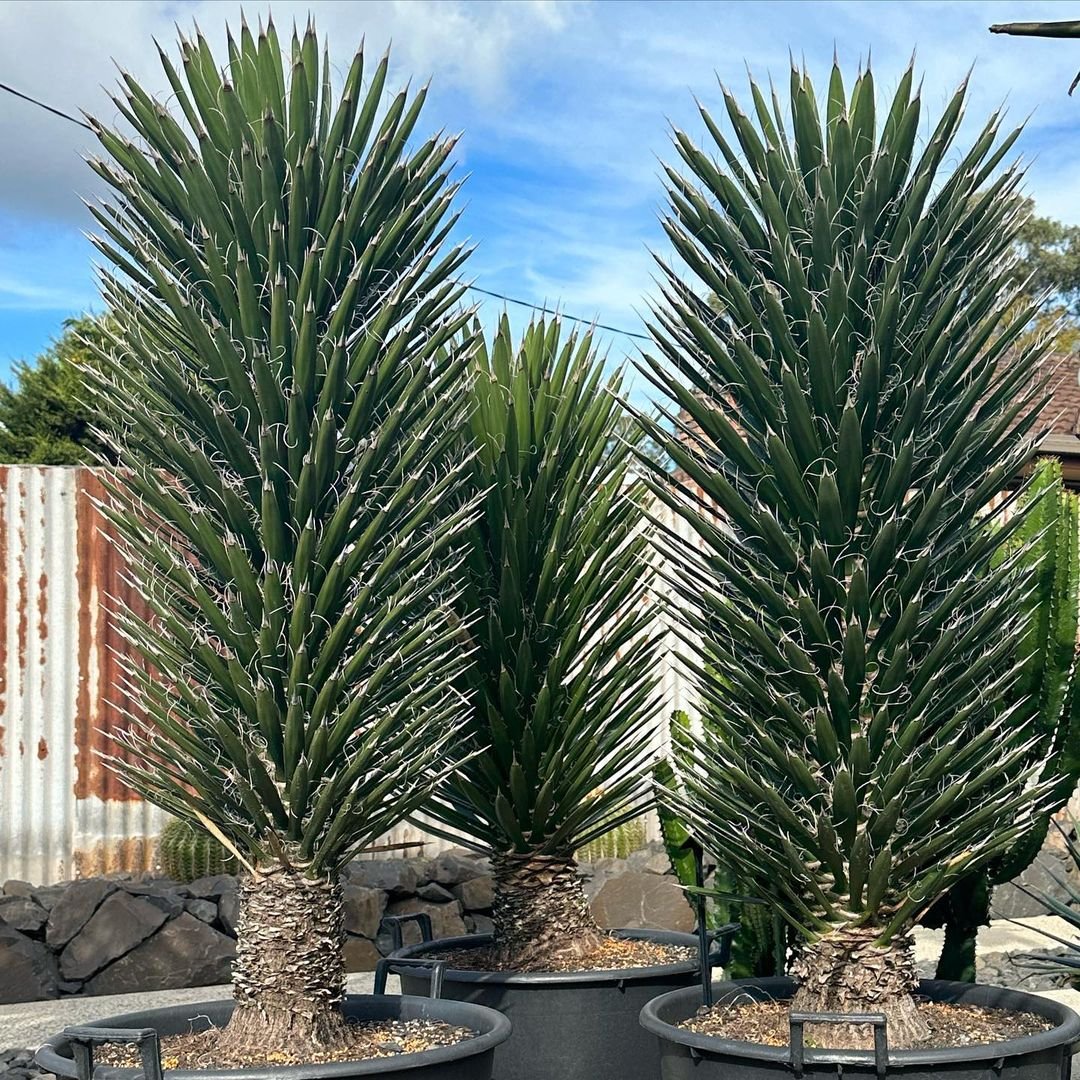
Certainly! Here’s a chart with information about the Yucca filifera tree:
| Aspect | Details |
|---|---|
| Botanical Name | Yucca filifera |
| Common Name | Yucca filifera, Tree Yucca |
| Plant Type | Evergreen tree-like shrub |
| Hardiness Zone | Zones 7-11 |
| Sun Exposure | Full sun |
| Soil Type | Well-drained, sandy or rocky soil |
| Watering Needs | Low; very drought-tolerant |
| Growth Habit | Upright, branching |
| Height/Spread | 15-30 feet tall / 10-20 feet spread |
| Special Features | Tall, spiky leaves, large clusters of white flowers, highly drought-tolerant, attracts pollinators, suitable for xeriscaping |
The Zacatecas Yucca, also known as the Giant Yucca or Tree Yucca, is native to Mexico but can be found in some parts of the southwestern United States.
While yuccas are often thought of as small plants, the Zacatecas Yucca can grow into a tree-like form, reaching heights of up to 30 feet or more. It has a thick trunk and a crown of long, narrow leaves.
This yucca produces tall spikes of white or cream-colored flowers. In its native habitat, it’s an important plant for wildlife, providing food and shelter for many animals.
Trees that start with Z might not be as common as some others, but they’re just as fascinating. From the tall Zelkova to the unique Zacatecas Yucca, each of these trees has its own special features and stories.
Learning about different kinds of trees helps us understand how important they are to our world. They clean our air, provide homes for animals and make our planet more beautiful.
Next time you’re outside, take a moment to look at the trees around you. Even if they don’t have names starting with Z, each one is special in its own way. By learning about and caring for trees, we can help keep our Earth healthy and beautiful for years to come.